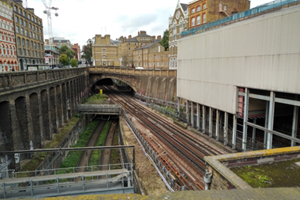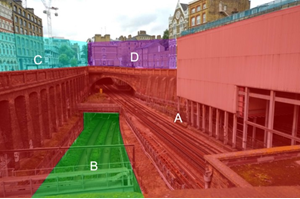Why is there a need to understand the interfaces of railway-based infrastructure?
Railway infrastructure does not exist in isolation. It is interconnected with and interdependent on its surrounding environments, and with interfacing third party infrastructure (highway, utilities, buildings, land, and property). These interfaces occur within, above, below, and adjacent to the railway environment. They affect and are affected by presence, property, and protection interfaces; and their safe presence and operation must be assured.
Where the term interfaces is used here to mean, the coming together of objects, which affect one another. This is distinctly different to the more commonly used term boundary, which suggests that where the railway infrastructure or environment stops, third party presence, property, and protection interests begin.
Gathering and recording evidence-based data within an asset interface register; and sharing that data across a railway-based organisation; and with its interfacing stakeholders can achieve:
- organisational cost and time savings;
- the effective creation of, and amendment to, the interfaces between new transport infrastructure and its environment;
- the increased safe presence and operation of existing and proposed transport infrastructure and its environment;
- effective implementation of asset and urban management processes; and
- the development of effective sustainable transport and urban management policies and planning.
 |
 |
Figs.1 and 2, show the presence and property interfaces of London Underground (shaded red, labelled A), Network Rail (shaded green, labelled B), public highway (shaded light blue and purple, and labelled C &D), and urban, infrastructure (unshaded, and unlabelled) in the Farringdon area of Central London, UK.
These images represent one example of the inter-disciplinary civil engineering, asset management, legal, historical, geographical, urban and transport planning, presence, property, and protection interfaces, affecting and affected by railway infrastructure. Evidence-based data for which occurrences of the interfaces should be recorded, shared, and maintained, for current and future use.
The following pages present:
- considerations for the analysis of the interfaces of railway-based infrastructure;
- the AIR processes developed to assist interface analysis and multi-disciplinary data sharing;
- a call for railway-based organisations and practitioners to participate in the AIR project;
- publications by the AIR team.
